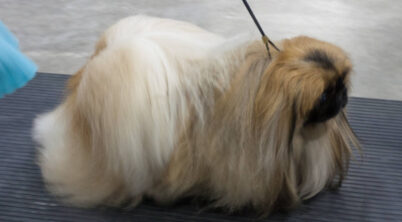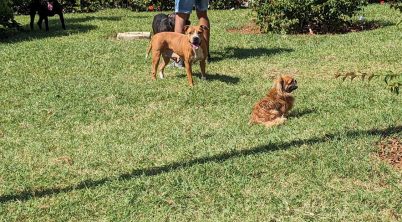The Pekingese breed, known for its luxuriant mane and compact stature, carries a noble history, having been bred for centuries as companions for Chinese royalty. Their distinctive appearance and confident demeanor often endear them to dog enthusiasts around the world. Despite their toy breed classification, Pekingese possess a self-assured and independent nature, which can sometimes be mistaken for aggression. Understanding the behavior of this breed requires insight into their heritage, temperament, and environmental influences.
Occasionally, Pekingese may exhibit behavior that is perceived as aggressive. This can stem from various causes, including health issues, such as pain from arthritis or other ailments, which can understandably make any dog irritable and more prone to snappy reactions. Their assertiveness, which is a breed trait, also plays a role in how they interact with other dogs and people. Addressing this characteristic through proper socialization and consistent training is crucial for mitigating any unwanted behavior and ensuring that the Pekingese lead a harmonious life with their human companions.
In managing the temperament of a Pekingese, it’s important to recognize that aggression is not a trait inherently linked to the breed but rather a behavioral response that can arise from specific situations or provocations. With a correct approach to training and understanding, Pekingese can indeed display the gentle and loving temperament they are known for, especially towards their owners. Owners should be cognizant of their pet’s behavior, ensuring that any signs of aggression are addressed promptly and appropriately.
Table of Contents
Understanding Pekingese Temperament
The Pekingese is a breed with a temperament that intertwines a regal dignity with a spirited boldness. Recognizing the roots of these characteristics is essential for understanding how the Pekingese interacts with their environment and the people around them.
Historical Significance
The Pekingese has a storied past that begins in the imperial courts of ancient China. Revered by Chinese royalty, they were considered semi-divine and were known colloquially as “lion dogs” due to their resemblance to Chinese guardian lions. This history has imbued the Pekingese with a noble and regal bearing, often manifested in a proud and dignified demeanor.
Breed Characteristics
Temperament: The Pekingese temperament is complex, often seen as a blend of independence and a confident assertiveness.
- Dignified: This breed carries itself with a certain grace that commands respect.
- Assertive: They are known to be steadfast and willful, traits that require clear and consistent training to manage effectively.
The Pekingese’s bold nature hints at its storied lineage as companions to Chinese royalty, reflecting an air of nobility and self-assuredness. Despite their small size, the Pekingese can display a large personality, embodying the essence of a lion dog both in spirit and appearance.
Recognizing Aggression in Pekingese
Pekingese aggression can present itself through various behaviors and be triggered by multiple factors. It is crucial for owners to identify the signs of aggression and understand its common causes to address it effectively.
Signs of Aggression
Aggressive behavior in Pekingese dogs may manifest through both physical and audible cues. It is important to pay attention to these signs to prevent escalation:
- Body Language: A Pekingese displaying aggression might have a stiff posture, ears pinned back, raised hackles, and an intense stare. The dog may also show its teeth or growl.
- Barking and Growling: While barking can be a normal form of communication, aggressive barking is typically louder, deeper, and occurs in conjunction with a threatening posture.
- Snapping or Biting: These are clear signs of aggression and can range from mild (warning nips without breaking the skin) to severe (full-force biting).
- Resource Guarding: Aggressive behaviors such as growling or biting when someone approaches their food, toys, or other important resources.
- Territorial Behaviors: Displaying dominant behavior like lunging or barking when someone enters what the Pekingese deems its territory can be a sign of aggression.
Common Causes
Several factors can contribute to the development of aggression in Pekingese dogs:
- Anxiety and Fear: Pekingese may show aggression when they feel threatened or are in a high-stress situation.
- Lack of Socialization: Poorly socialized dogs might become aggressive due to unfamiliarity with different people or environments.
- Health Issues: Conditions causing pain or discomfort such as arthritis, internal wounds, or bone fractures can lead to aggressive tendencies due to the pain.
- Dominant Behavior: Some Pekingese may attempt to assert themselves within the household or towards other animals, which can be read as aggression.
- Unmet Needs: If a Pekingese is not getting sufficient mental and physical stimulation, frustration can build up, potentially resulting in aggressive actions.
Effective Training Strategies
When addressing aggression in Pekingese dogs, it’s essential to employ targeted training strategies that encourage good behavior, define clear pet-owner boundaries, and seek professional assistance if needed, thus ensuring a well-mannered and sociable pet.
Positive Reinforcement
Positive reinforcement is a core technique in dog training, encouraging good behavior through rewards. With Pekingese, pet owners should:
- Use commands like “sit” or “stay”, rewarding compliance with treats or affection.
- Maintain consistency with rewards to reinforce learning.
Setting Boundaries
Clear boundaries help manage a Pekingese’s behavior effectively. Owners should:
- Establish rules for acceptable behavior and enforce them regularly.
- Redirect attention from negative behaviors, like biting, to appropriate activities.
Professional Guidance
Sometimes, owners need external help from a professional dog trainer, especially one familiar with the American Kennel Club’s guidelines. This includes:
- Early socialization to help the Pekingese get accustomed to various stimuli and environments.
- Regular exercise routines supervised by a trainer to manage aggressive tendencies through structured activities.
Socialization and Behavior
Socialization greatly influences a Pekingese’s behavior, especially towards children, pets, and in overcoming typical behavioral issues. A Pekingese that is well-socialized from an early age exhibits a more gentle and affectionate demeanor, while insufficient socialization can lead to dominance behavior and what is colloquially known as “small dog syndrome.”
Interaction with Children and Pets
Pekingese are affectionate and can be gentle companions, but their interaction with children and other pets necessitates early and careful socialization. Due to their strong-willed and sometimes stubborn nature, setting clear boundaries is crucial.
- Children: Teaching children how to approach and handle the dog gently and respecting the dog’s independence helps foster a friendly relationship.
- Pets: Introducing pets gradually and in a controlled environment helps the Pekingese become well-behaved members of the animal community.
Overcoming Behavioral Issues
Early socialization is key to addressing common behavioral issues in Pekingese. This breed can be independent, but consistent training can overcome stubborn tendencies.
- Training Tips:
- Consistency: Be consistent with commands and rewards to reinforce good behavior.
- Positive Reinforcement: Use treats and praise to encourage desired actions.
- Socialization Strategies:
- Exposure: Regularly expose your Pekingese to different people and animals to reduce fear-driven aggression.
- Desensitization: Gradually introduce them to various situations to prevent leash reactivity and watchdog tendencies.
Health and Management
Managing a Pekingese’s health is crucial for mitigating aggression that may stem from various sources, including anxiety and stress. Ensuring proper exercise, addressing health issues, and maintaining adequate grooming are all essential.
Dealing with Anxiety and Stress
Exercise: Regular exercise is important for Pekingese dogs to maintain their health and manage stress levels. Adapting the intensity and duration to suit their short legs and flat faces is essential, as they may experience difficulty breathing with too much exertion. Daily walks and play sessions can help alleviate anxiety.
Health Problems: Pekingese dogs are prone to several health issues that can affect their behavior. These include respiratory challenges due to their short faces, as well as potential eye problems due to their prominent eyes. Dental care is a significant concern as well, and without proper dental hygiene, Pekingese can suffer from pain that may increase stress or result in aggressive behavior.
Grooming: Regular grooming helps manage the Pekingese’s long, thick coat, which comes in various colors including red, tan, and sable. An improperly maintained coat can lead to discomfort and skin issues, contributing to stress. Regular brushing is necessary to reduce shedding and prevent mats.
Anxiety: Pekingese can develop separation anxiety if left alone for extended periods. They may cater to a more sedentary lifestyle but still need enough interaction and mental stimulation to prevent stress.
By addressing the Pekingese’s unique needs for exercise, grooming, and companionship, owners can help manage stress and anxiety, making for a happier and less aggressive pet. Adequate care from puppyhood is key; early socialization and consistent, gentle training lay the groundwork for well-adjusted Pekingese adults.
Breed-Specific Considerations
The Pekingese dog breed, with its regal lineage from ancient China, may exhibit a demeanor that is both alert and expressive, marked by a distinctive stubbornness. Owners must recognize the predisposition of these toy dogs to be vocal and the necessity for consistent training to mitigate unwarranted behaviors.
Training Tips for Pekingese Owners
Training a Pekingese requires patience due to their stubbornness. Early socialization and consistent, gentle training can guide them towards desirable behavior patterns.
- Consistency is Key: Pekingese benefit from a consistent routine, reinforcing good habits.
- Positive Reinforcement: Reward good behavior with treats and praise to encourage a Pekingese’s cooperation.
- “Leave It” Training: This command helps control a Pekingese’s vocal responses when they become uncomfortable with strangers or unfamiliar situations.
- Respect Their Space: Due to their flat face, Pekingese can be prone to breathing difficulties and may become irate if feeling smothered; provide them with a quiet space.
Owners should train Pekingese with a calm and assertive approach, addressing any signs of aggression with firm, non-confrontational corrections.








